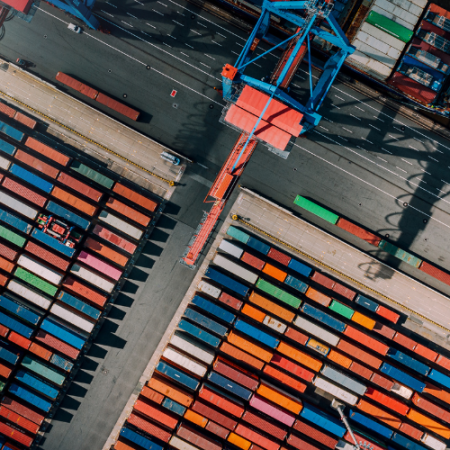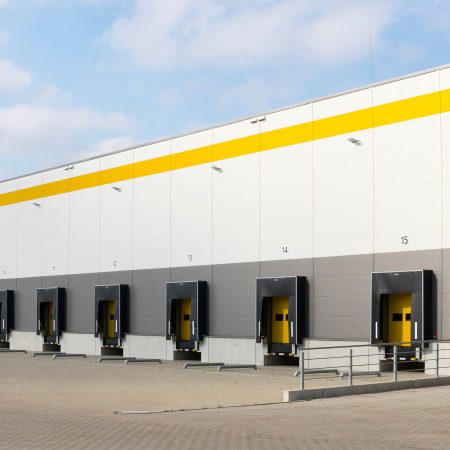Managing returns remains one of ecommerce’s most persistent and costly challenges. As online sales continue to rise, so too do returns. In the fashion industry, for example, 20-30% of packages ordered online are sent back, according to The Business of Fashion.
Getting the returns process right is an integral part of the online shopping experience. But the rising volume of returns adds further cost and complexity to ecommerce supply chains that are already susceptible to disruption – whether from tariff shifts and geopolitical tensions or wider economic uncertainty.
As a result, online retailers are placing increasing emphasis on reverse logistics: the complex process of receiving returns from customers and moving them back through the supply chain to warehouses, distributors or manufacturers – or sending them for repair, recycling or disposal.
And that means focusing on their real estate strategies to ensure they have the warehouse space they need, where they need it. Handling a return typically requires 20% more warehouse space compared with a product that is being dispatched.
Total B2C ecommerce global revenue
Source: International Trade Administration
Ecommerce returns: a complex and expensive process
The average return rate for online retailers reached 20.4% in 2024. Similar to traditional retail, there are also significant seasonal fluctuations. Return volumes spike immediately after major holidays, when retailers can expect to see return rates increase by up to 16.9%. In many cases, this necessitates enlisting additional third-party logistics companies to assist in handling these peaks.
The returns process is complex – and expensive for retailers. Once goods reach the warehouse after being sent back by customers, they are inspected for quality control. From there, items can follow one of several paths. They could be:
- Immediately repacked and restored to the warehousing inventory
- Shipped elsewhere for repair
- Transferred to a discount partner’s warehouse if repair isn’t viable
- Recycled or sent for disposal if unsellable
The journey behind an ecommerce return
Source: Savills Research
There are also regional differences in the way customers return items. In countries such as Australia and the United States, for example, using return labels and shipping products back to delivery centres is the most common way of processing returns. But in markets such as the United Arab Emirates and China, at-home pick-up services are increasingly popular. Meanwhile, organised drop-off points and parcel lockers are gaining traction in countries, including Germany and the UK.
The costs for retailers go far beyond the lost revenue from issuing a refund. Processing costs include not only added shipping, but also restocking and potential value loss, which can amount to more than half of the item’s original value.
This has led many online retailers, especially in the fashion industry, to make the tough decision to begin charging customers for returns. These costs vary by retailer and by region – but these charges likely only offset part of the return costs.
Average cost customers pay for ecommerce returns
Source: Savills Research using a sample of top online fashion brands statistics
Even so, return charges are a growing concern for customers. A recent DHL survey found that 53% of respondents globally listed free returns as the second most requested improvement to ecommerce services, behind only free delivery. Additionally, 39% of respondents cited return fees as their biggest frustration when shopping online. If online retailers hope to keep their customers while charging for returns, they must prioritise speed and convenience.
There are also environmental considerations. Online returns generate additional carbon emissions and packaging waste, while products that cannot be resold often end up in landfill. As consumers become increasingly environmentally conscious, developing efficient reverse logistics processes is not only a financial issue but a key operational sustainability challenge.
Prime warehouse rents rise as demand increases
Ecommerce is defined by long supply chains and complex logistics – but it is nearby warehouse centres that often face the greatest pressure from high return volumes. The increase in demand has contributed to a 30% rise in prime warehouse rents and taxes globally since December 2020.
Warehouse worker wage and costs index
Source: Savills Research
To efficiently process returns for customers worldwide, ecommerce businesses must secure and maintain warehouse space in strategically located markets – particularly near major urban centres and transport hubs. Proximity is crucial to minimising shipping times and costs, driving up the value of well-positioned logistics real estate.
The evolving nature of reverse logistics is also reshaping warehouse design. Facilities now require specialised areas for quality control, sorting, repairs and refurbishment – features that traditional distribution centres often lack. Demand is growing for adaptable spaces that can handle fluctuating return volumes.
The competition for scarce real estate extends beyond large regional warehouses to smaller urban fulfilment hubs and micro-warehouses, which support last-mile return and delivery services. Securing such strategically located, flexible spaces often means committing to longer leases and accepting higher rental premiums, adding another layer of cost for ecommerce operators.
Technology and labour costs remain central to reverse logistics
In addition to property expenses, labour remains one of the largest and fastest-growing costs for logistics occupiers. Global labour costs in the warehouse and logistics sector have increased by 26% over the past four years, driven by rising wage demands, labour shortages and competitive job markets.
This increase reflects the work required to inspect, sort and process returned goods – a task that remains labour-intensive despite technological advances. As ecommerce – and corresponding return volumes – continue to grow, occupiers can expect overall labour costs to keep rising.
In response, logistics operators are accelerating investments in automation and AI-driven technologies. These range from advanced robotics that can scan garments for defects to AI models that predict the quantity and timing of returns.
However, despite these technological gains, the nuanced judgement and quality control performed by skilled labour remain central to return logistics operations.
In a recent Savills survey of market industrial and logistics experts, access to labour still ranked higher than smart building technologies or digital connectivity that enable technology to be implemented in logistics centres. Rising labour costs will therefore continue to be a significant factor shaping real estate and operational strategies for ecommerce businesses.
Top five site selection criteria by region
Source: Savills survey of global network of industrial and logistics specialists, April 2025
As ecommerce continues to grow and mature – and as online consumer expectations rise – the challenge of managing returns will remain a critical factor shaping retailers’ real estate and supply chain strategies. By securing well-located, flexible warehouse space and investing in technology and labour, businesses that plan proactively for the demands of reverse logistics will be best positioned to deliver a seamless customer experience in an increasingly competitive market.



